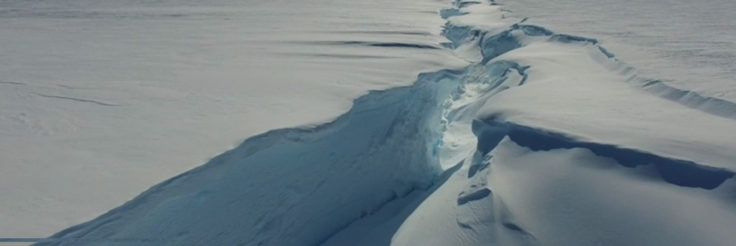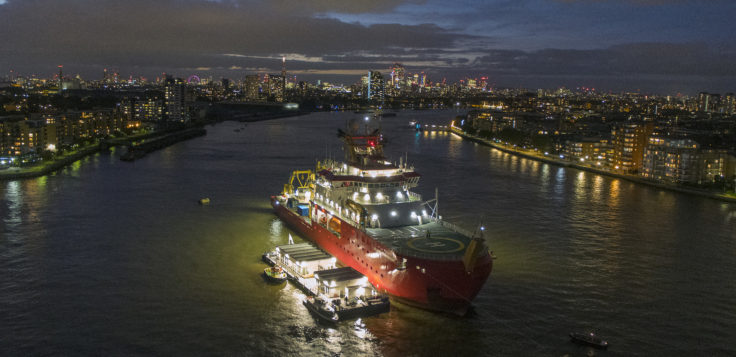Our planet is changing at a rate and scale not experienced in human history. Ice core records show atmospheric concentrations of greenhouse gases are higher than at any point in the previous 800,000 years. Changes in concentration that in the past have taken millennia, have been brought about within a couple of hundred years. Our planet is currently operating far outside the realms of natural variability raising urgent questions about how its systems will respond.

Already extreme events threaten the poles, including wildfires in the Arctic and exceptional heatwaves in the Antarctic. Extreme heat events in Antarctica are currently rare but are anticipated to become more common as Earth’s climate warms. In March 2022, a record-breaking heatwave hit East Antarctica raising temperatures on the high, cold Antarctic plateau from their typical -55oC to only -10oC. This unprecedented increase happened over just three days, making it one of the largest short-term temperature jumps on record. If temperatures reach 0°C they can melt ice, which at the most extreme, can lead to destabilising ice masses. On the Antarctic Peninsula, high temperatures have triggered the loss of floating ice shelves, and prompted the break-up and loss of inland ice.
Polar marine species, that make up the biodiversity of marine ecosystems, are particularly sensitive to extreme events, such as marine heatwaves, although their responses are complex, with different regions, populations and species being impacted to varying degrees. Impacts may be immediate or occur later, and the perturbations they cause may have long-lasting effects. Furthermore, the resilience of polar systems is already being lowered by many longer-term stressors, such as sea-ice retreat, ocean warming and ocean acidification. These stressors may compound with extreme events to generate impacts that are far more severe than those generated by any of these factors alone. The fact that many of these polar systems play a key role in global processes, such as the processing of nutrients and carbon, underlines the importance of understanding how multiple stressors may compound to impact polar biodiversity and ecosystem function.

A key concern is the potential for Earth systems to cross critical thresholds, or “tipping points”, which can trigger large changes that are irreversible over long timescales. Ongoing climate warming is pushing the Polar Regions closer to potential tipping points, including collapse of the Greenland and West Antarctic ice sheets, and the abrupt thaw of boreal permafrost. Such changes can trigger cascading effects across the globe by pushing other parts of the climate system closer to tipping points themselves. For example the rapid loss of land ice and sea ice in both polar regions can release pulses of fresh meltwater into the ocean, which could lead to an abrupt slowing of ocean circulation. This can have consequences for our climate on the timescale of a few decades, with countries that fringe the North Atlantic believed to be especially susceptible.
The appearance of the Antarctic Ozone Hole demonstrates that significant unanticipated changes can be forced by human-activity, while also evidencing that policy-action can enable recovery if undertaken rapidly and effectively. We urgently need to determine how fast and how severely the polar environment will change, with comprehensive assessment of the consequent risks for the rest of our planet. Ultimately, robust early warning systems for polar “tipping points” and high-impact environmental events are required to inform policy decisions on adaptation and mitigation options.
It is a significant multi-disciplinary challenge to predict and assess the global impact of such polar extreme and compound events, as well as tipping points and cascading effects. At the British Antarctic Survey, we have the necessary skills and expertise to develop such predictive capability, underpinned by existing data and advanced digital technologies. We will target our efforts to provide policy-makers with the highest-quality information and advice, to empower robust evidence-based decision making.
The challenge:
To accurately predict polar extreme and compound events, tipping points and cascading effects, and provide clear statements and evidence for government on how their impact will play out over the next years to centuries.

Our science targets:
- Understand the drivers of polar extreme events (e.g. extreme weather, Arctic wildfires), their frequency and severity, to determine future impacts in the Polar Regions and globally
- Assess the likelihood and impact of compound events in the Polar Regions, for example the combined effect on marine biodiversity and ecosystem function of marine heatwaves and stressors such as sea-ice loss, ocean warming and ocean acidification
- Better understand the vulnerability of the planet to tipping points and cascading effects, and produce new assessments of how likely they are on timescales from years to centuries
- Improve capability to predict the timing and magnitude of high-impact events and tipping points in the polar environment, by developing new numerical methods and innovative data collection, and drawing on knowledge from past environmental changes – an early-warning system for extreme, abrupt and irreversible changes
- Provide evidence on the likelihood and potential impacts of non-linear events in the polar environment under various climate futures to support policy decisions on mitigation and adaptation options